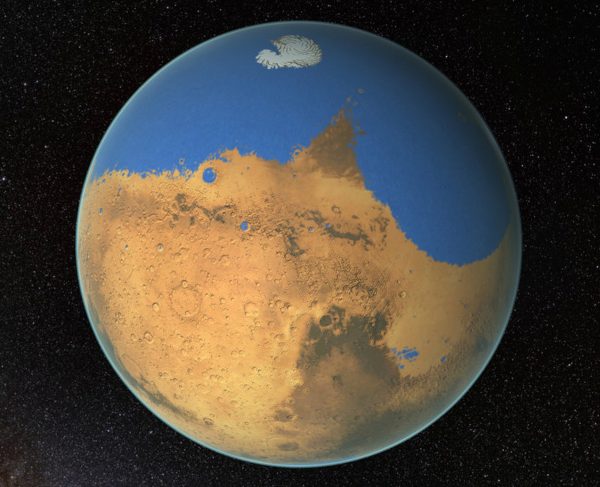There’s a hole in the Martian atmosphere that opens once every two years, venting the planet’s limited water supply into space — and dumping the rest of the water at the planet’s poles.
That’s the explanation advanced by a team of Russian and German scientists who studied the odd behavior of water on the Red Planet. Earthbound scientists can see that there’s water vapor high in the Martian atmosphere, and that water is migrating to the planet’s poles. But until now, there was no good explanation for how the Martian water cycle works, or why the once-drenched planet is now a dry husk.
The presence of water vapor high above Mars is puzzling because the Red Planet has a middle layer of its atmosphere that seems like it should be shutting down the water cycle altogether.
“The Martian middle atmosphere is too cold to sustain water vapor,” the researchers wrote in the study, which was published April 16 in the journal Geophysical Research Letters.
So how is water crossing that middle-layer barrier?
The answer, according to computer simulations in the current study, has to do with two atmospheric processes unique to the Red Planet.



